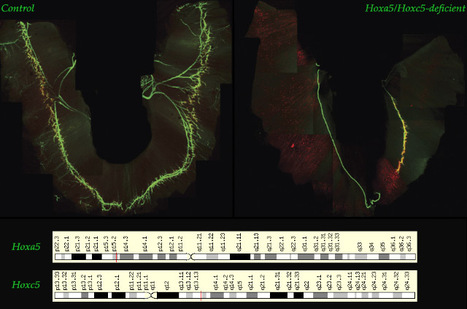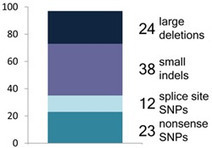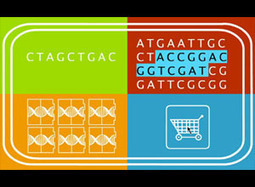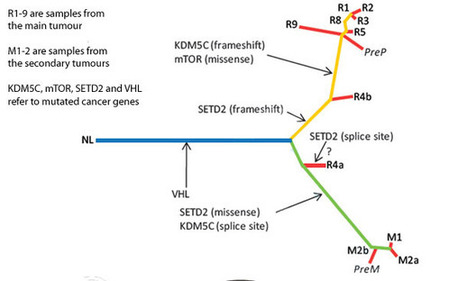Researchers have discovered that two genes Hoxa5 and Hoxc5 play a critical role in establishing the neuronal circuits required for breathing.
The three-year study published in the journal Nature Neuroscience identifies a molecular code that distinguishes a group of muscle-controlling nerve cells collectively known as the phrenic motor column (PMC).
“These cells lie about halfway up the back of the neck, just above the fourth cervical vertebra, and are probably the most important motor neurons in your body,” explained senior author Prof Jeremy Dasen of the Howard Hughes Medical Institute.
Harming the part of the spinal cord where the PMC resides can instantly shut down breathing. But relatively little is known about what distinguishes PMC neurons from neighboring neurons, and how PMC neurons develop and wire themselves to the diaphragm in the fetus. The PMC cells relay a constant flow of electrochemical signals down their bundled axons and onto the diaphragm muscles, allowing the lungs to expand and relax in the natural rhythm of breathing.
“We now have a set of molecular markers that distinguish those cells from other populations of motor neurons, so that we can study them in detail and look for ways to selectively enhance their survival,” Prof Dasen said.
To find out what distinguishes PMC neurons from their spinal neighbors in mice, the scientists injected a retrograde fluorescent tracer into the phrenic nerve, which wires the PMC to the diaphragm, and then looked for the spinal neurons that lit up as the tracer worked its way back to the PMC. They used transgenic mice that express green fluorescent protein (GFP) in motor neurons and their axons in order to see the phrenic nerve. After noting the characteristic gene expression pattern of these PMC neurons, the scientists began to determine their specific roles.
“When Hoxa5 and Hoxc5 are silenced in embryonic motor neurons in mice,” the scientists reported, “the PMC fails to form its usual, tightly columnar organization and doesn’t connect correctly to the diaphragm, leaving a newborn animal unable to breathe.”
“Even if you delete these genes late in fetal development, the PMC neuron population drops and the phrenic nerve doesn’t form enough branches on diaphragm muscles,” Prof Dasen said.
Prof Dasen plans to use the findings to help understand the wider circuitry of breathing – including rhythm-generating neurons in the brain stem, which are in turn responsive to carbon dioxide levels, stress, and other environmental factors. “Now that we know something about PMC cells, we can work our way through the broader circuit, to try to figure out how all those connections are established,” he said.
“Once we understand how the respiratory network is wired we can begin to develop novel treatment options for breathing disorders such as sleep apneas,” said lead author Dr Polyxeni Philippidou.
Via Dr. Stefan Gruenwald



 Your new post is loading...
Your new post is loading...























